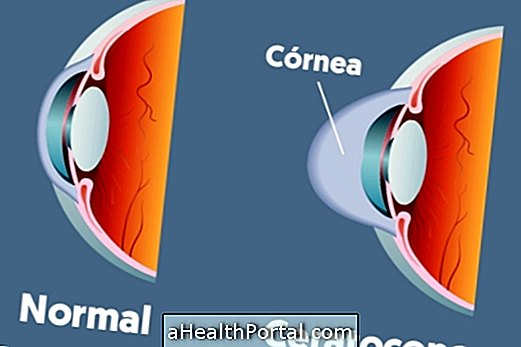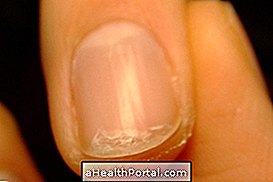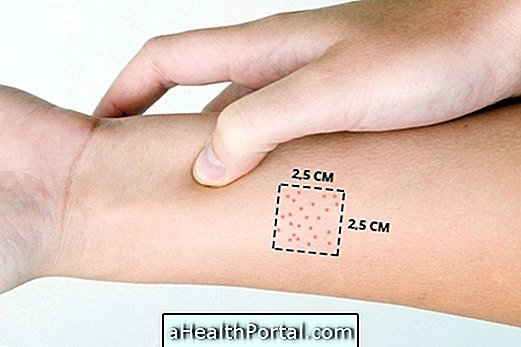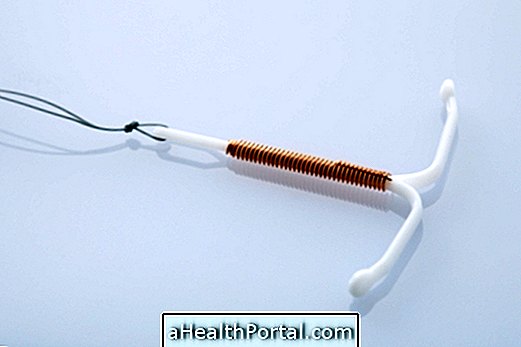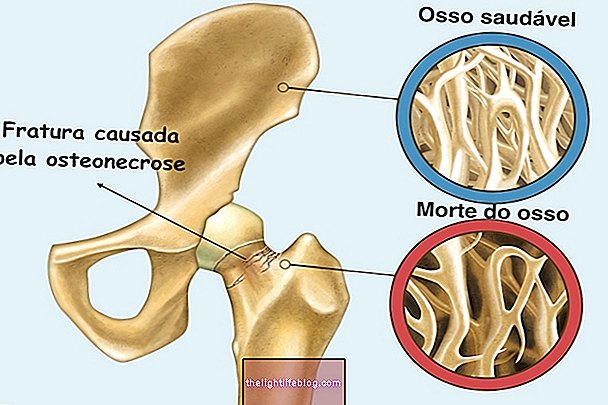Lasik surgery is indicated to treat vision problems as up to 10 degrees of myopia, 4 degrees of astigmatism or 6 of hypermetropia, it takes only a few minutes and has a great recovery. This surgery is to modify the curvature of the cornea, which is located at the front of the eye, improving the way the eye focuses images, allowing better vision.
After surgery, the person should not wear eyeglasses or contact lenses and should only use the eye drops indicated by the ophthalmologist during the time he recommends that it may be 1 to 3 months during recovery. Know the types of eye drops and what they are for.

How Lasik Surgery Is Done
Lasik surgery is done with the person awake and fully conscious, but in order not to feel pain or discomfort, the doctor uses anesthetics in the form of eye drops minutes before the procedure.
During surgery, the eye is kept open with a small device and at that time the person may feel a little eye pressure. Then the surgeon removes a small layer of tissue from the eye and applies the laser to the cornea, closing the eye again. This surgery takes only 5 minutes in each eye and the laser is applied for about 8 seconds. To facilitate healing, a special lens is placed and the person should remain for about 30 minutes with the eyes closed until the doctor's release.
As soon as the doctor indicates the person can open his eyes and check how his vision is. It is expected that the person will fully recover his vision no longer needing to wear glasses from the first day of surgery, but it is common for the appearance or increase of sensitivity to light, especially in the first few days and therefore the person should not drive soon after surgery .
How to prepare
To prepare for the surgery, the ophthalmologist must perform several examinations such as topography, pachymetry, corneal mapping, pressure measurement and dilation of the pupil. Other tests that may indicate that the person needs a personalized Lasik surgery are corneal tomography and ocular aberrometry.
How is recovery
The recovery is very fast and on the same day the person should see everything without needing glasses or contact lenses, but in the first month after the surgery some care must be taken to avoid infections. Some important precautions include not rubbing the eyes, wearing eye protection for 15 days, resting and being rested to recover faster and putting the eye drops indicated by the doctor. See what are the essential eye care.
In the first month, the eyes should be more sensitive to light, and should wear dark glasses and do not wear makeup, and avoid crowded places with little air circulation, such as movies or malls, to avoid infections. It is also indicated:
- Protect the eyes, thus avoiding eye trauma;
- Do not enter the pool or the sea;
- Do not wear makeup for 30 days;
- Wear sunglasses if you feel light sensitivity;
- Use eye drops if you notice that the eyes are dry;
- Do not rub eyes for 15 days;
- Clean the eyes with gauze and saline daily;
- Keep hands clean at all times;
- Do not remove the lens placed by the doctor.
In the first 6 hours after the surgery the ideal is that the person can lie on his or her belly upwards so as not to press his eyes, but the next day it is possible to return to practice exercises since it is not a collective sport or contact with other people .
The main risks of this surgery are inflammation or ocular infection, excessive dilation of the cornea or worsening of vision problems. After surgery the person may present some side effects like blurred vision, circles around the lights, sensitivity to light and double vision that should be told to the doctor who can state what to do.
Contraindications for Lasik Surgery
This surgery is not recommended for those who are not yet 18 years old, in case of pregnancy and also in case of:
- Very fine cornea;
- Eye diseases such as glaucoma, cataract, simple ocular herpes and keratoconus;
- Decompensated heart disease or use of pacemaker;
- Autoimmune disease such as rheumatoid arthritis or lupus;
- Vascular diseases;
- Diabetes;
- While using medications like Isotretinoin, for acne, Sumatriptan, for migraines, and immunosuppressants.
When the person can not perform Lasik surgery, the ophthalmologist can indicate the performance of PRK surgery that is indicated for people with a very thin cornea or who have a larger pupil than the general population. See how PRK surgery is done and possible complications.
The price of Lasik surgery varies between 3 and 6 thousand reais and it can only be done by the health plan when there is more than 5 degrees of myopia or 6 degrees of hypermetropia and only when the degree has been stable for more than 1 year.





